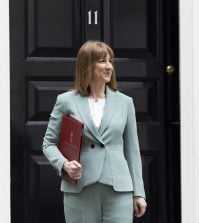UK civil service data shows gaping gender pension gap, says auditor

There is 47% gender pay gap in pensions in the UK civil service, according to analysis published by government spending watchdog the National Audit Office (NAO) today.
The report, Public Service Pensions, analysed data from the past two decades across the four largest pay-as-you-go pension schemes (the NHS, civil service, armed forces and teachers) to “draw out long-term trends in pension costs and benefits”.
The average pension for men in the civil service was £11,047 per year, according to 2016 data analysed in the report. This dropped to an annual payment of £5,875 for women on average – a 47% difference. Over all the services analysed, the average gap between male and female pensions was 45%: this rose to 63% for the NHS and dropped to 29% for teachers.
Difference in pay is one of factors driving this discrepancy, according to the report. On average men are paid more than women, are less likely to work part-time, and often have longer lengths of service as women are more likely to take career breaks, it notes.
But the pension gap far outstrips the average gender pay gap in the civil service, which was 10.5% according to 2020 workforce statistics. Nor is this likely to improve any time soon. “Elements of the government’s 2011–2015 reforms, such as the move to career average schemes, may help to reduce these differences over the long term,” the report says, “but the gap will likely persist because of differences in pay and working patterns.”
Looking beyond affordability
“As well as managing the implementation of the changes made necessary by the McCloud judgment, HM Treasury should consider how to ensure that pensions remain attractive to public servants, particular younger staff and those on lower incomes,” said Gareth Davies, head of the NAO.
HM Treasury needs to consider more than just affordability when it comes to pensions, the report finds. One recommendation is that it should work with the Cabinet Office and other public service employers “to understand how public service pensions can best support their workforce planning, to ensure pensions are an effective tool in recruiting and retaining the staff they need.”
This follows a finding in the report that public service pension arrangements are often “inflexible”. “Most public service employers can only offer potential employees the choice between staying in the scheme or opting out. There is some evidence to suggest that those in lower age and income groups are more likely to opt out of pension arrangements as they view contributions as unaffordable,” the report finds.
Figures suggest why lower income groups may feel this way. In 2019-20 total employee contributions totalled £8.2bn (US$11.4bn) in real terms from the four pension schemes analysed. This increased from £5.7bn (US$7.9bn) in 2009-10 – representing a 44% rise – over a decade, due to pension reforms that increased the employee contribution rate. But, the report notes, contributions from professions themselves are in “the context of average pay decreasing 12% in real terms over the same period”.
McCloud judgement
The issue of a discrimination case is also raised in the report. In 2011 the government introduced pension reforms with the aim of managing future costs, including moving professionals from final-salary pensions to ones relating to their career average salary. But in 2018, the Court of Appeal ruled against these reforms, claiming the guards in place to support people who were near retirement discriminated according to age.
Earlier this year the government announced its plans to rectify this by giving those eligible a choice about how they receive their pensions. “More than three million scheme members will need to make a complex decision about their plans for retirement, and they will need useful, reliable and timely information from scheme administrators to support them in making that decision,” the report says. Schemes and employers will also face an administrative burden, it adds.
The report recommends that the Treasury should develop plans to work on “the administrative challenge” that its proposed resolution creates for schemes and employers. It should also look at how the government helps professionals to understand their pensions, in particular those most affected by the current changes “who will need reliable and timely information”.





















